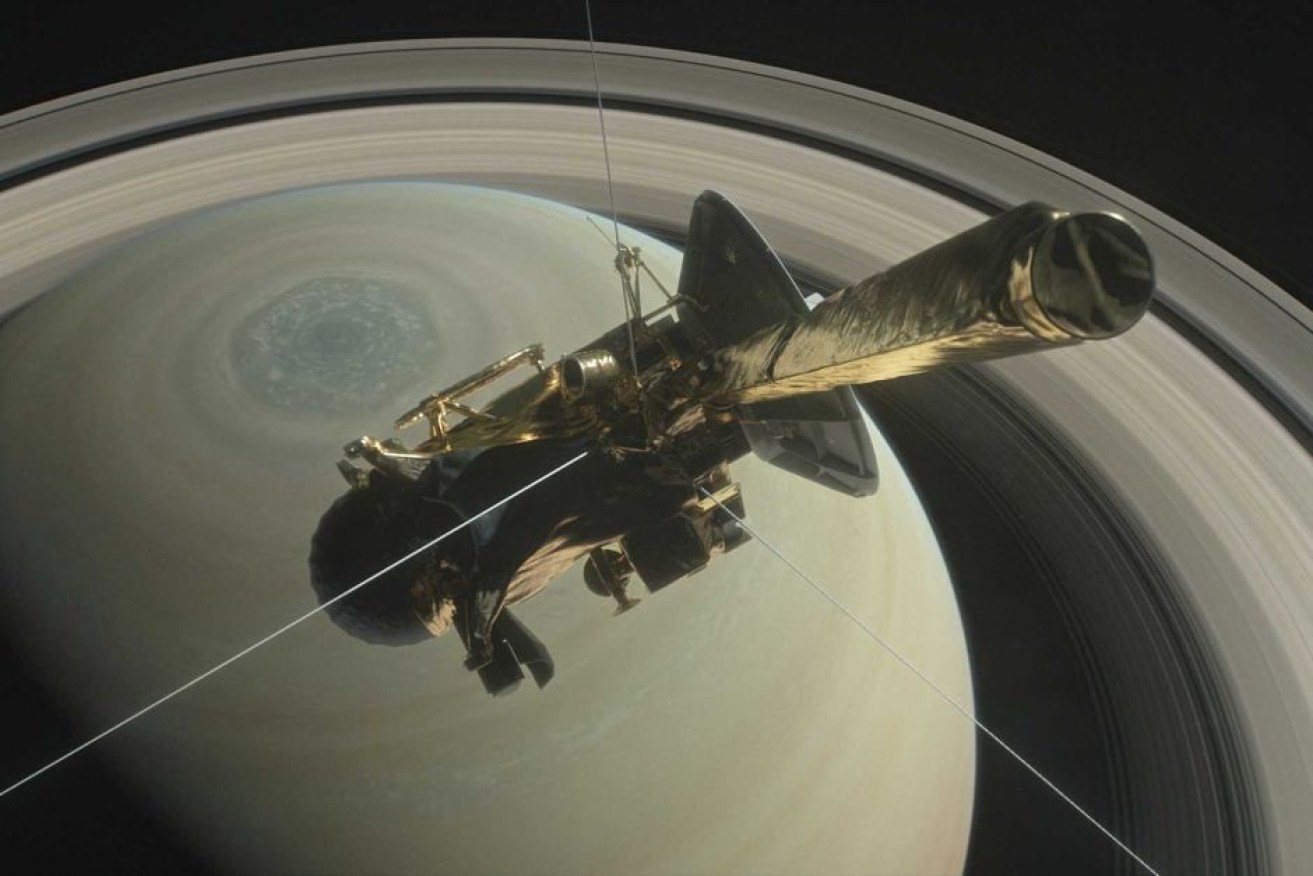Cassini space probe’s Saturn mission races towards an epic climax

Even in its final moments, Cassini will continue to send new data in real time back to Earth. Photo: NASAJPL-Caltech
NASA’s Cassini spacecraft has been travelling through space for 20 years and will soon end its journey more than 1.2 billion kilometres away from Earth.
Before it retires, Cassini will pass near Saturn and give us the closest look yet at what goes on in the giant planet’s rings.
Its final mission in what has been a 13-year study of space in general and Saturn in particular is slated for September. NASA’s announcement explained that Casini, which is the size of a small bus and powered by an onboard nuclear cell, is running out of fuel.
Cassini has been in orbit around Saturn, getting some spectacular views of Saturn’s rings and moons and allowing scientists back on Earth to explore it from afar.
Linda Spilker, a Cassini project scientist at NASA’s Jet Propulsion Laboratory (JPL) in California, said that in many ways the spacecraft’s grand finale was “like a brand new mission”.
“We’re going to a place and obtaining data with the Cassini spacecraft, we could only obtain by doing it this way,” she said.
“I wouldn’t be a bit surprised if some of the discoveries we make with Cassini might be the very best of the mission, from these grand final orbits.”
Later this month Cassini will begin its new five-month mission, where the team will direct it into the orbit of Titan, one of Saturn’s moons, and use it as a slingshot to send the spacecraft into the narrow space between Saturn’s atmosphere and its rings.
During this time Cassini will map Saturn’s gravity and magnetic fields and scoop up particles from the rings, perhaps finally settling the question of what they made of.
“We’ll do this by measuring the mass of the rings very accurately,” Dr Spilker said.
“If the rings are a lot more massive than we expect, perhaps they’re old, as old as Saturn itself.
“They’ve been massive enough to survive the micrometeoroid bombardment and erosion, and leave us with the rings we see today.”
Cassini’s ‘daring end’
As Cassini skims the outer edges of Saturn’s atmosphere it will be at risk from fields of dust and debris, and will use its antennae as a shield to protect itself.
“Certainly there are some unknowns, but that’s one of the reasons we’re doing this kind of daring exploration at the end of the mission,” said Earl Maize, Cassini project manager at JPL.
On September 15, after 22 orbits between the planet and its rings, Cassini will plunge into Saturn’s upper atmosphere of clouds, where it will break apart.
Scientists do not want to risk Cassini crashing into Saturn’s moons and potentially contaminating areas where there could be the right conditions for alien life.
But even in its final moments, Cassini will continue to send new data in real time back to Earth.
Cassini’s mission has ‘rewritten the textbooks’
Astronomer Fred Watson, from the Australian astronomical observatory, said the Cassini mission was one of the most successful NASA missions ever.
“Because what we’ve learnt about the Saturnian system, the planet, its rings and its moons, has really rewritten the textbooks,” he said.
During its time circling Saturn’s system Cassini has gathered a wide array of data, as well as dropping the probe, Huygen, on Titan.

Cassini passes close by Saturn. Photo: NASAJPL-Caltech
It has observed methane seas on that moon, and jets of ice and water vapour coming from another of Saturn’s 62 moons, Enceladus.
The data it captured from both those moons made headlines, as it revealed their potential to contain habitable environments.
Cassini also focused on a giant hexagonal polar vortex on Saturn, which spins around the north pole at speeds of 320 kilometres per hour, and has become known as the hexagon.
“Saturn’s north polar region is itself an extraordinary place, with that vortex, with extraordinary winds in it,” Dr Watson said.
“[And] the polar hexagon, a stable set of jet stream winds that form such a regular geometric shape – it almost defies belief.”
Although it will be a sad farewell to the intrepid spacecraft, Cassini’s long life – starting in 1997 – has been dubbed by NASA as one of the most “scientifically rich voyages yet undertaken in our solar system”.
-ABC








